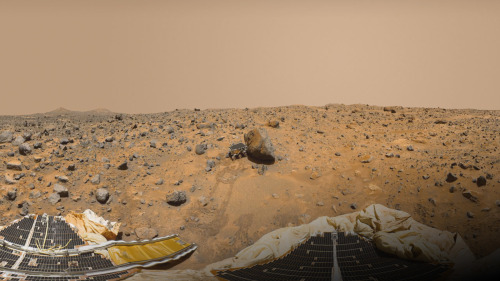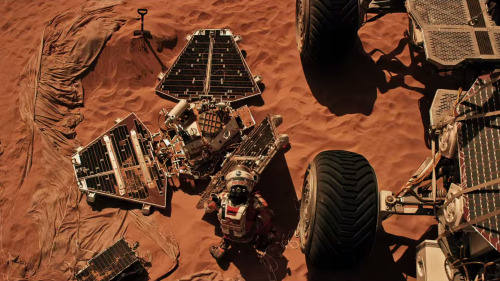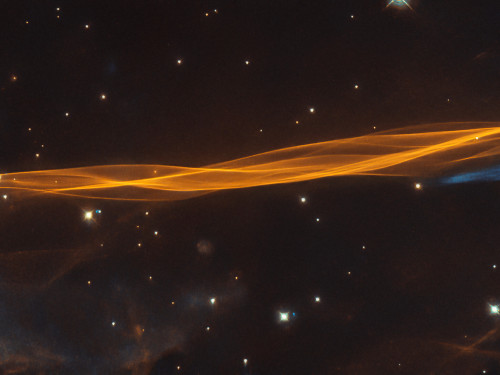And We’re Live!!!
And we’re live!!!
NASA Astronaut Serena Auñoń Chancellor is here answering your questions during this Tumblr Answer Time. Tune in and join the fun!
More Posts from Nasa and Others
What can you see from the space station? Can you see stars, the moon and sun, and Earth weather like lightening storms?
Fun Facts About Mars

Mars is a cold desert world, and is the fourth planet from the sun. It is half the diameter of Earth and has the same amount of dry land. Like Earth, Mars has seasons, polar ice caps, volcanoes, canyons and weather, but its atmosphere is too thin for liquid water to exist for long on the surface. There are signs of ancient floods on the Red Planet, but evidence for water now exists mainly in icy soil and thin clouds.

Earth has one, Mars has two…moons of course! Phobos (fear) and Deimos (panic) are the Red Planet’s two small moons. They are named after the horses that pulled the chariot of the Greek war god Ares, the counterpart to the Roman war god Mars.

The diameter of Mars is 4220 miles (6792 km). That means that the Red Planet is twice as big as the moon, but the Earth is twice as big as Mars.

Since Mars has less gravity than Earth, you would weigh 62% less than you do here on our home planet. Weigh yourself here on the Planets App. What’s the heaviest thing you’ve ever lifted? On Mars, you could have lifted more than twice that! Every 10 pounds on Earth only equals 4 pounds on the Red Planet. Find out why HERE.

Mass is the measurement of the amount of matter something contains. Mars is about 1/10th of the mass of Earth.

Mars and Earth are at their closest point to each other about every two years, with a distance of about 33 million miles between them at that time. The farthest that the Earth and Mars can be apart is: 249 million miles. This is due to the fact that both Mars and Earth have elliptical orbits and Mars’ orbit is tilted in comparison with the Earth’s. They also orbit the sun at different rates.

The temperature on Mars can be as high as 70 degrees Fahrenheit (20 degrees Celsius) or as low as about –225 degrees Fahrenheit (-153 degrees Celsius). How hot or cold the surface varies between day and night and among seasons. Mars is colder than Earth because it is farther from the sun.

You know that onions have layers, but did you know that Mars has layers too? Like Earth, Mars has a crust, a mantle and a core. The same stuff even makes up the planet layers: iron and silicate.

Ever wonder why it’s so hard launching things to space? It’s because the Earth has a log of gravity! Gravity makes things have weight, and the greater the gravity, the more it weights. On Mars, things weigh less because the gravity isn’t as strong.

Take a deep breath. What do you think you just breathed in? Mostly Nitrogen, about a fifth of that breath was Oxygen and the rest was a mix of other gases. To get the same amount of oxygen from one Earth breath, you’d have to take around 14,500 breaths on Mars! With the atmosphere being 100 times less dense, and being mostly carbon dioxide, there’s not a whole lot of oxygen to breathe in.

Mars has about 15% of Earth’s volume. To fill Earth’s volume, it would take over 6 Mars’ volumes.
For more fun Mars facts, visit HERE.
Make sure to follow us on Tumblr for your regular dose of space: http://nasa.tumblr.com
How could your research in diseases help missions to the Moon, Mars and other places in our solar system?
Solar System: Life Among the Stars
Let us lead you on a journey of our solar system. Here are some things to know this week:
1. Amateur" Means "One Who Loves"

We release thousands of breathtaking solar system images every year and not all of them are the exclusive result of work by scientists. Amateur image processors around the world take raw data from deep space missions and turn it into striking visuals.
Amateur images from Cassini
Get current unprocessed images
2. Prepare to Weigh Anchor

OSIRIS-REx, our first spacecraft destined to rendezvous with, study and return a sample of an asteroid, will launch. The mission to asteroid Bennu will yield the largest sample returned from space since the Apollo era. Tune in four our media briefing about OSIRIS-REx for 2 p.m. EDT on Aug. 17.
Learn more and tune in.
3. Out for a Walk

Join us for live coverage on Aug. 19 as our astronauts Jeff Williams and Kate Rubins install a new gateway for American commercial crew spacecraft at the International Space Station.
Live coverage of the spacewalk.
4. The Weather Out There

Aug. 17 marks 50 years since the launch of Pioneer 7, a robotic spacecraft that lived up to its name by exploring the solar magnetic field, the solar wind and cosmic rays in deep space. Along with Pioneers 6, 8, and 9, the spacecraft formed a ring of solar weather stations spaced along Earth's orbit. Measurements by the craft were used to predict solar storms for organizations ranging from commercial airlines to power companies.
Learn more.
5. Destination: The Red Planet

The European Space Agency's ExoMars/Trace Gas Orbiter mission to Mars performed a critical engine burn to keep it on course. The maneuver was a success, and ExoMars remains on target for an October arrival.
Learn more.
Discover the full list of 10 things to know about our solar system this week HERE.
Make sure to follow us on Tumblr for your regular dose of space: http://nasa.tumblr.com

Tiny BurstCube's Tremendous Travelogue
Meet BurstCube! This shoebox-sized satellite is designed to study the most powerful explosions in the cosmos, called gamma-ray bursts. It detects gamma rays, the highest-energy form of light.
BurstCube may be small, but it had a huge journey to get to space.

First, BurstCube was designed and built at NASA’s Goddard Space Flight Center in Greenbelt, Maryland. Here you can see Julie Cox, an early career engineer, working on BurstCube’s gamma-ray detecting instrument in the Small Satellite Lab at Goddard.
BurstCube is a type of spacecraft called a CubeSat. These tiny missions give early career engineers and scientists the chance to learn about mission development — as well as do cool science!

Then, after assembling the spacecraft, the BurstCube team took it on the road to conduct a bunch of tests to determine how it will operate in space. Here you can see another early career engineer, Kate Gasaway, working on BurstCube at NASA’s Wallops Flight Facility in Virginia.
She and other members of the team used a special facility there to map BurstCube’s magnetic field. This will help them know where the instrument is pointing when it’s in space.

The next stop was back at Goddard, where the team put BurstCube in a vacuum chamber. You can see engineers Franklin Robinson, Elliot Schwartz, and Colton Cohill lowering the lid here. They changed the temperature inside so it was very hot and then very cold. This mimics the conditions BurstCube will experience in space as it orbits in and out of sunlight.

Then, up on a Goddard rooftop, the team — including early career engineer Justin Clavette — tested BurstCube’s GPS. This so-called open-sky test helps ensure the team can locate the satellite once it’s in orbit.

The next big step in BurstCube’s journey was a flight to Houston! The team packed it up in a special case and took it to the airport. Of course, BurstCube got the window seat!

Once in Texas, the BurstCube team joined their partners at Nanoracks (part of Voyager Space) to get their tiny spacecraft ready for launch. They loaded the satellite into a rectangular frame called a deployer, along with another small satellite called SNoOPI (Signals of Opportunity P-band Investigation). The deployer is used to push spacecraft into orbit from the International Space Station.

From Houston, BurstCube traveled to Cape Canaveral Space Force Station in Florida, where it launched on SpaceX’s 30th commercial resupply servicing mission on March 21, 2024. BurstCube traveled to the station along with some other small satellites, science experiments, as well as a supply of fresh fruit and coffee for the astronauts.

A few days later, the mission docked at the space station, and the astronauts aboard began unloading all the supplies, including BurstCube!

And finally, on April 18, 2024, BurstCube was released into orbit. The team will spend a month getting the satellite ready to search the skies for gamma-ray bursts. Then finally, after a long journey, this tiny satellite can embark on its big mission!

BurstCube wouldn’t be the spacecraft it is today without the input of many early career engineers and scientists. Are you interested in learning more about how you can participate in a mission like this one? There are opportunities for students in middle and high school as well as college!
Keep up on BurstCube’s journey with NASA Universe on X and Facebook. And make sure to follow us on Tumblr for your regular dose of space!


Mars Pathfinder & Sojourner Rover (360 View) Explained
Thanks to new technology, we can take a 360-degree tour of the 1997 Pathfinder mission landing site, including Sojourner, the first Mars rover. Check out this interactive YouTube panorama, and then…
…keep scrolling to find out more about each point of interest, how the Pathfinder mission compares to “The Martian” and NASA’s real Journey to Mars.

Yogi
“Yogi” is a meter-size rock about 5 meters northwest of the Mars Pathfinder lander and the second rock visited by the Sojourner Rover’s alpha proton X-ray spectrometer (APXS) instrument. This mosaic shows super resolution techniques applied to help to address questions about the texture of this rock and what it might tell us about how it came to be.

Twin Peaks
The Twin Peaks are modest-size hills to the southwest of the Mars Pathfinder landing site. They were discovered on the first panoramas taken by the IMP camera on the July 4, 1997, and subsequently identified in Viking Orbiter images taken over 20 years ago. They’re about 30-35 meters tall.

Barnacle Bill
“Barnacle Bill” is a small rock immediately west-northwest of the Mars Pathfinder lander and was the first rock visited by the Sojourner Rover’s alpha proton X-ray spectrometer (APXS) instrument. If you have some old-school red-cyan glasses, put them on and see this pic in eye-popping 3-D.

Rock Garden
The Rock Garden is a cluster of large, angular rocks tilted in a downstream direction from ancient floods on Mars. The rocky surface is comprised of materials washed down from the highlands and deposited in this ancient outflow channel.

MOAR INFO
Pathfinder Lander & Sojourner Rover
Mission Facts [PDF]
Science Results
Rock & Soil Types


This vista was stitched together from many images taken in 1997 by Pathfinder.

Pathfinder and Sojourner figure into Mark Watney’s quest for survival on the Red Planet in the book and movie, “The Martian.” See JPL’s role in making “The Martian” a reality: http://go.nasa.gov/1McRrXw and discover nine real NASA technologies depicted in “The Martian”: http://go.nasa.gov/1QiyUiC.

So what about the real-life “Journey to Mars”? NASA is developing the capabilities needed to send humans to Mars in the 2030s. Discover more at http://nasa.gov/journeytomars and don’t forget to visit me when you make it to the Red Planet. Until then, stay curious and I’ll see you online.
What would you say to a person who has few opportunities to excel due to social determinants that he cannot control (nationality, money, family, education)?

Do you believe in magic? ✨ While appearing as a delicate and light veil draped across the sky, this @NASAHubble image reminds us of the power of imagination. What does this look like to you? In reality, it's a small section of a Cygnus supernova blast wave, located around 2,400 light-years away. The original supernova explosion blasted apart a dying star about 20 times more massive than our Sun between 10,000 and 20,000 years ago. Since then, the remnant has expanded 60 light-years from its center. Credit: @ESA/Hubble & NASA, W. Blair; acknowledgment: Leo Shatz
Our sun is dynamic and ever-changing. On Friday, July 14, a solar flare and a coronal mass ejection erupted from the same, large active region. The coils arcing over this active region are particles spiraling along magnetic field lines.
Solar flares are explosions on the sun that send energy, light and high-speed particles into space. Such flares are often associated with solar magnetic storms known as coronal mass ejections. While these are the most common solar events, the sun can also emit streams of very fast protons – known as solar energetic particle (SEP) events – and disturbances in the solar wind known as corotating interaction regions (CIRs).
Learn more HERE.
Make sure to follow us on Tumblr for your regular dose of space: http://nasa.tumblr.com

Hello there 👋
Welcome back to the third week of Mindful Mondays. It’s very good to see you 🧘
Here is another installment of mindfulness to get the first day of your week well underway, and underway well. Experience the phases of the Moon as you turn on, tune in, and space out to relaxing music and stunning ultra-high-definition visuals of our cosmic neighborhood… 🌌
Sounds good, right? Of course it does. Mysterious, even. You can watch even more Space Out episodes on NASA+, a new no-cost, ad-free streaming service.
Why not give it a try? There is nothing to lose, everything to gain. Because just a few minutes this Monday morning can make all the difference to your entire week, as @nasa helps to bring mindfulness from the stars and straight to you.
🧘WATCH: Space Out with NASA: Moon Phase 12/11 at 1pm EST🧘
-
 john-erby liked this · 3 years ago
john-erby liked this · 3 years ago -
 2reputationpegacorns liked this · 3 years ago
2reputationpegacorns liked this · 3 years ago -
 iselder-lovegood liked this · 4 years ago
iselder-lovegood liked this · 4 years ago -
 uniquestatesmanflowerranch liked this · 4 years ago
uniquestatesmanflowerranch liked this · 4 years ago -
 bethelnie-blog liked this · 5 years ago
bethelnie-blog liked this · 5 years ago -
 unknown-uwoit liked this · 5 years ago
unknown-uwoit liked this · 5 years ago -
 class42warship liked this · 5 years ago
class42warship liked this · 5 years ago -
 nymphetishized liked this · 5 years ago
nymphetishized liked this · 5 years ago -
 lucmarcou liked this · 5 years ago
lucmarcou liked this · 5 years ago -
 themarionettewashere liked this · 5 years ago
themarionettewashere liked this · 5 years ago -
 61peepsonaroad liked this · 5 years ago
61peepsonaroad liked this · 5 years ago -
 franciscolanderosblog liked this · 5 years ago
franciscolanderosblog liked this · 5 years ago -
 adt-space reblogged this · 5 years ago
adt-space reblogged this · 5 years ago -
 vvenomm liked this · 5 years ago
vvenomm liked this · 5 years ago -
 jaskcupcake liked this · 5 years ago
jaskcupcake liked this · 5 years ago -
 delightfulpaperpost liked this · 5 years ago
delightfulpaperpost liked this · 5 years ago -
 aki-kalchek-blog liked this · 5 years ago
aki-kalchek-blog liked this · 5 years ago -
 v-1-ol-3-t liked this · 5 years ago
v-1-ol-3-t liked this · 5 years ago -
 tclhb liked this · 5 years ago
tclhb liked this · 5 years ago -
 mymarcolelis liked this · 5 years ago
mymarcolelis liked this · 5 years ago -
 hero-ically liked this · 5 years ago
hero-ically liked this · 5 years ago -
 yuiko2627 liked this · 5 years ago
yuiko2627 liked this · 5 years ago -
 moraine-moraine liked this · 5 years ago
moraine-moraine liked this · 5 years ago -
 lennoxs liked this · 5 years ago
lennoxs liked this · 5 years ago -
 galaxystew liked this · 5 years ago
galaxystew liked this · 5 years ago -
 letsbereal123 liked this · 5 years ago
letsbereal123 liked this · 5 years ago -
 barabarav2 liked this · 5 years ago
barabarav2 liked this · 5 years ago -
 dancedance-resolution liked this · 5 years ago
dancedance-resolution liked this · 5 years ago -
 kermits-cup-of-tea liked this · 5 years ago
kermits-cup-of-tea liked this · 5 years ago -
 thegusmherottic reblogged this · 5 years ago
thegusmherottic reblogged this · 5 years ago -
 thegusmherottic liked this · 5 years ago
thegusmherottic liked this · 5 years ago -
 fairytalesmakeyoustrong liked this · 5 years ago
fairytalesmakeyoustrong liked this · 5 years ago -
 parmesh-iitkgp liked this · 5 years ago
parmesh-iitkgp liked this · 5 years ago -
 sentientluggage liked this · 5 years ago
sentientluggage liked this · 5 years ago -
 malecus liked this · 5 years ago
malecus liked this · 5 years ago -
 lamia237 liked this · 5 years ago
lamia237 liked this · 5 years ago -
 thevincentchong reblogged this · 5 years ago
thevincentchong reblogged this · 5 years ago -
 thevincentchong liked this · 5 years ago
thevincentchong liked this · 5 years ago -
 jancisstuff liked this · 5 years ago
jancisstuff liked this · 5 years ago -
 pan-con-jalea liked this · 5 years ago
pan-con-jalea liked this · 5 years ago -
 booly111 liked this · 5 years ago
booly111 liked this · 5 years ago
Explore the universe and discover our home planet with the official NASA Tumblr account
1K posts